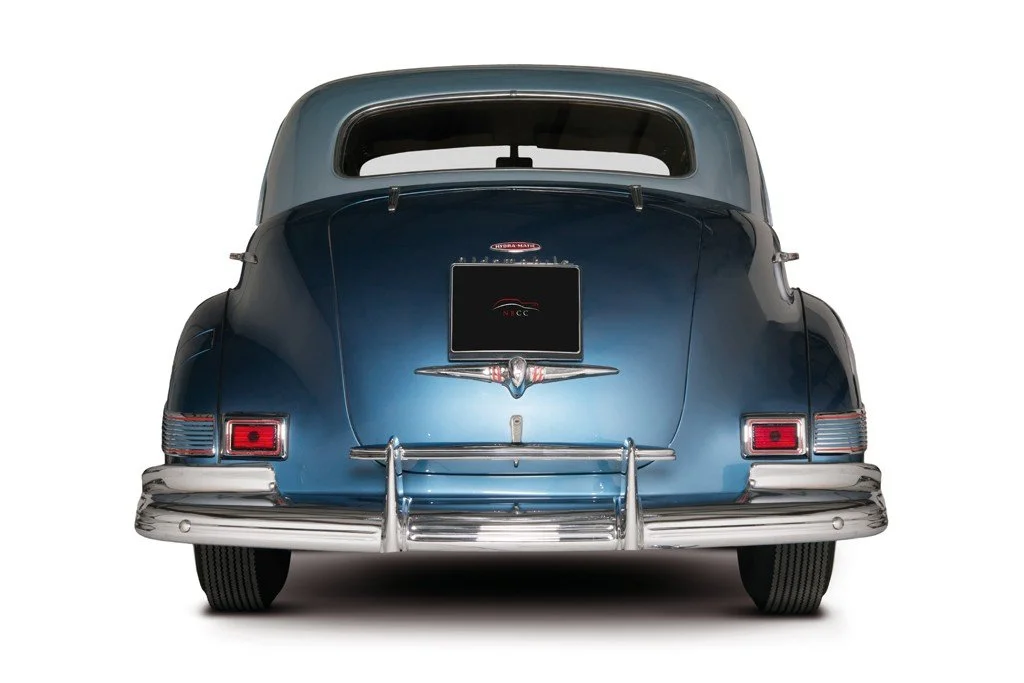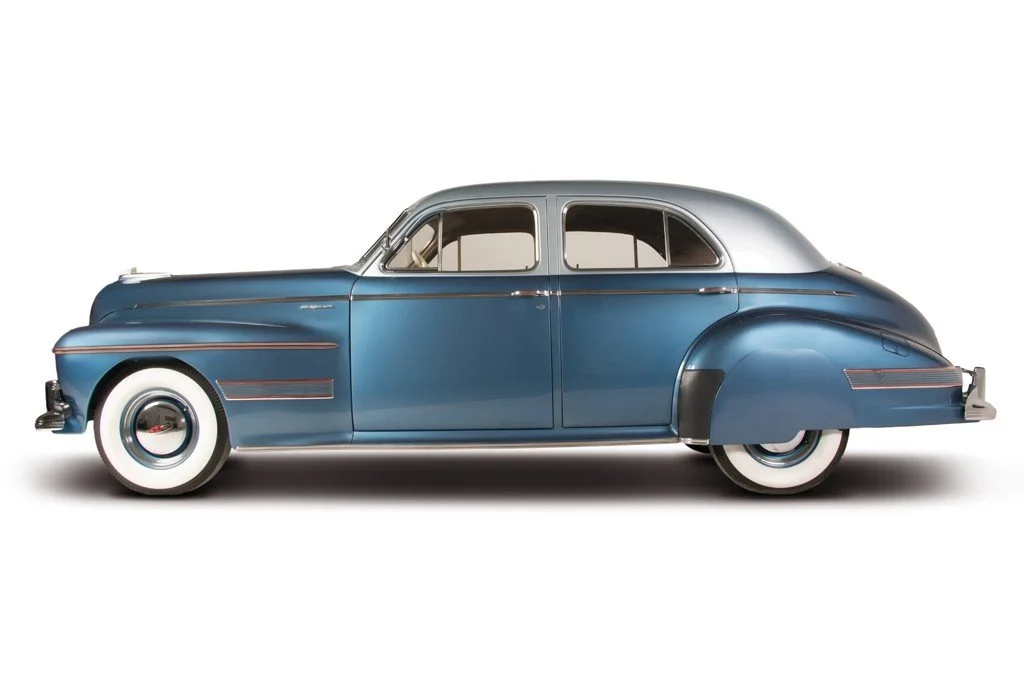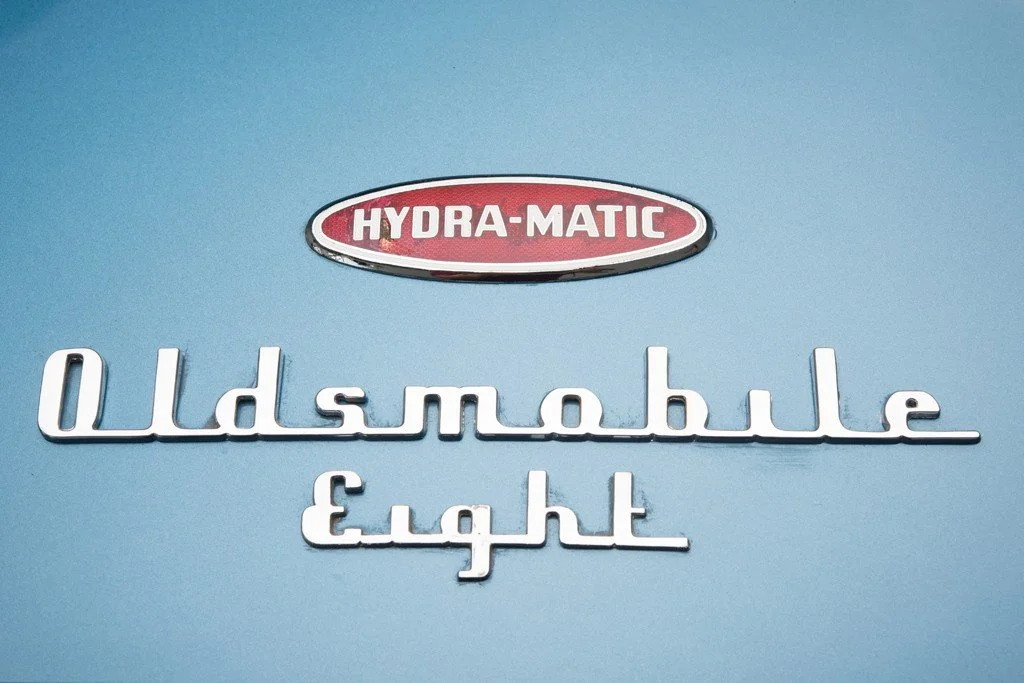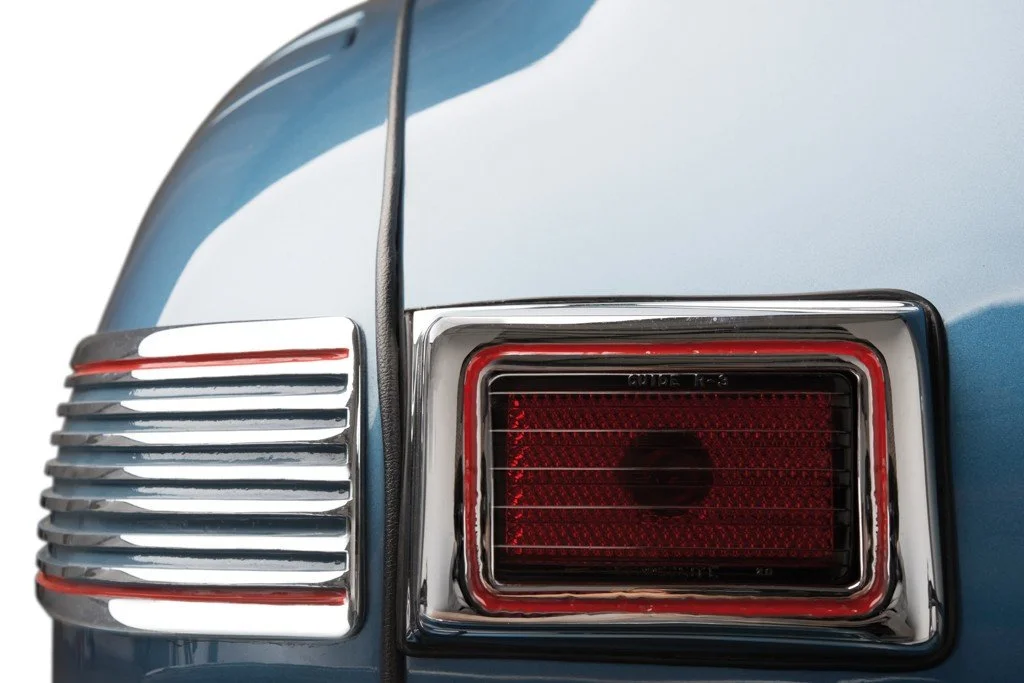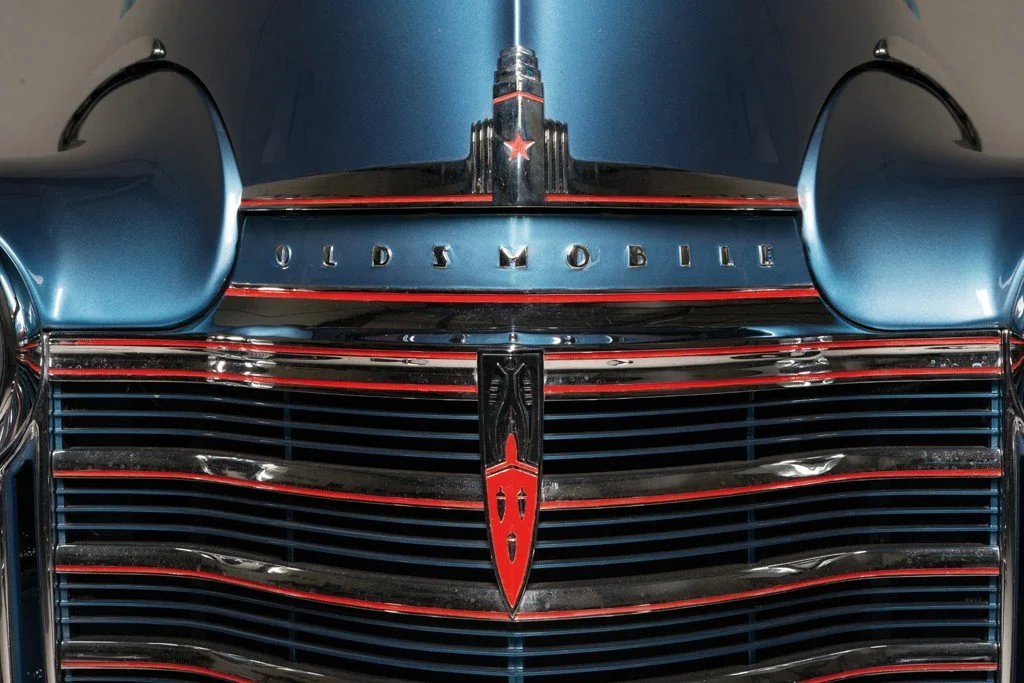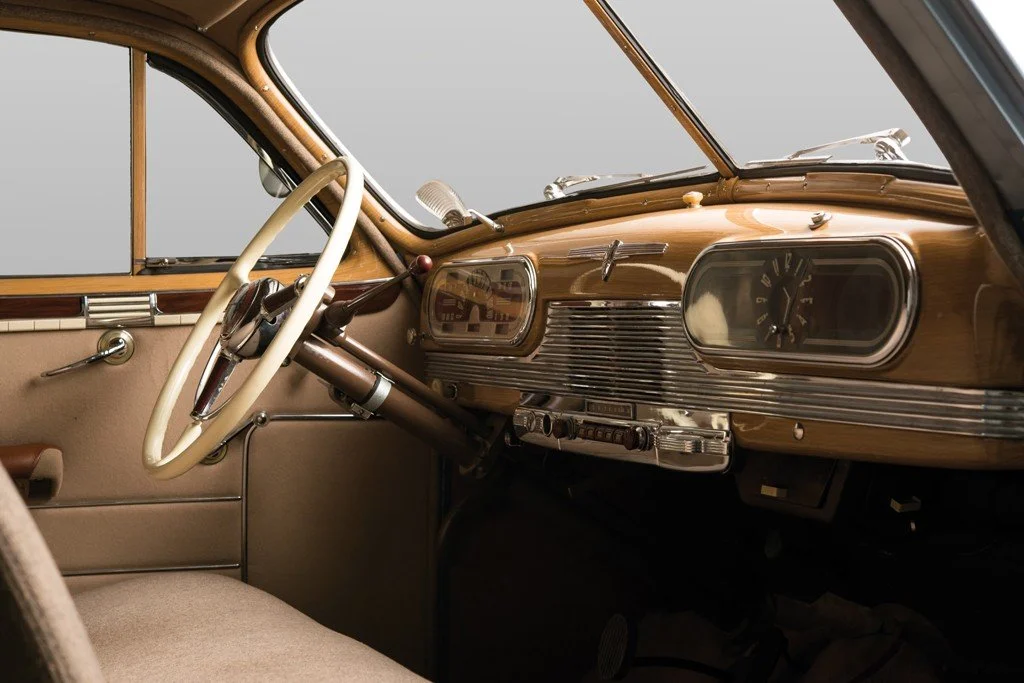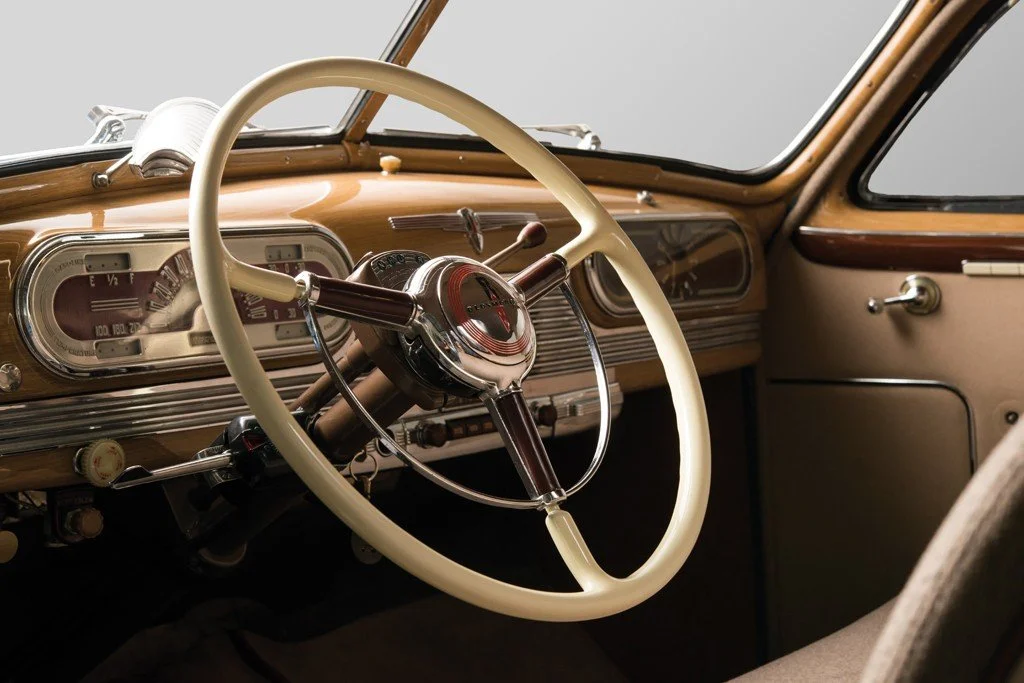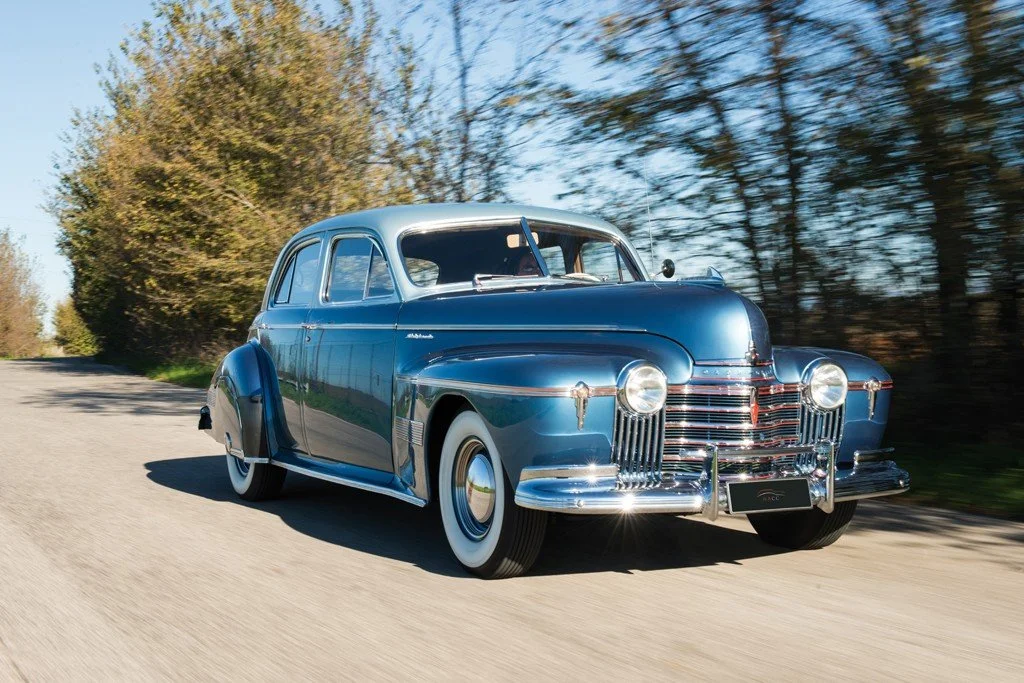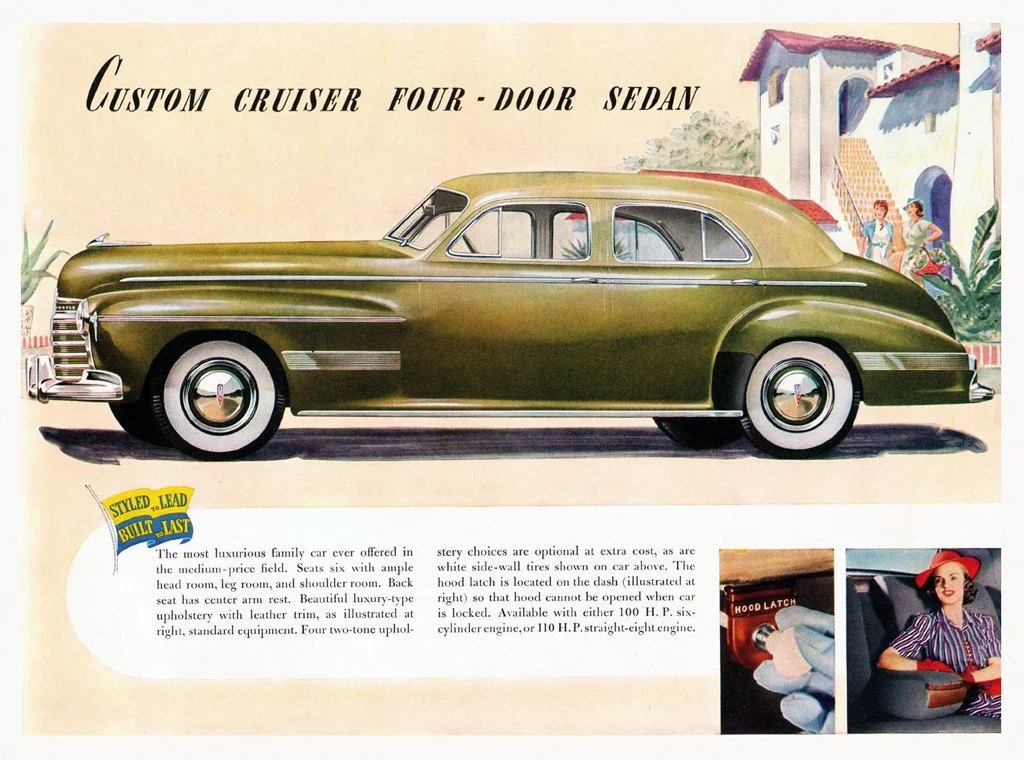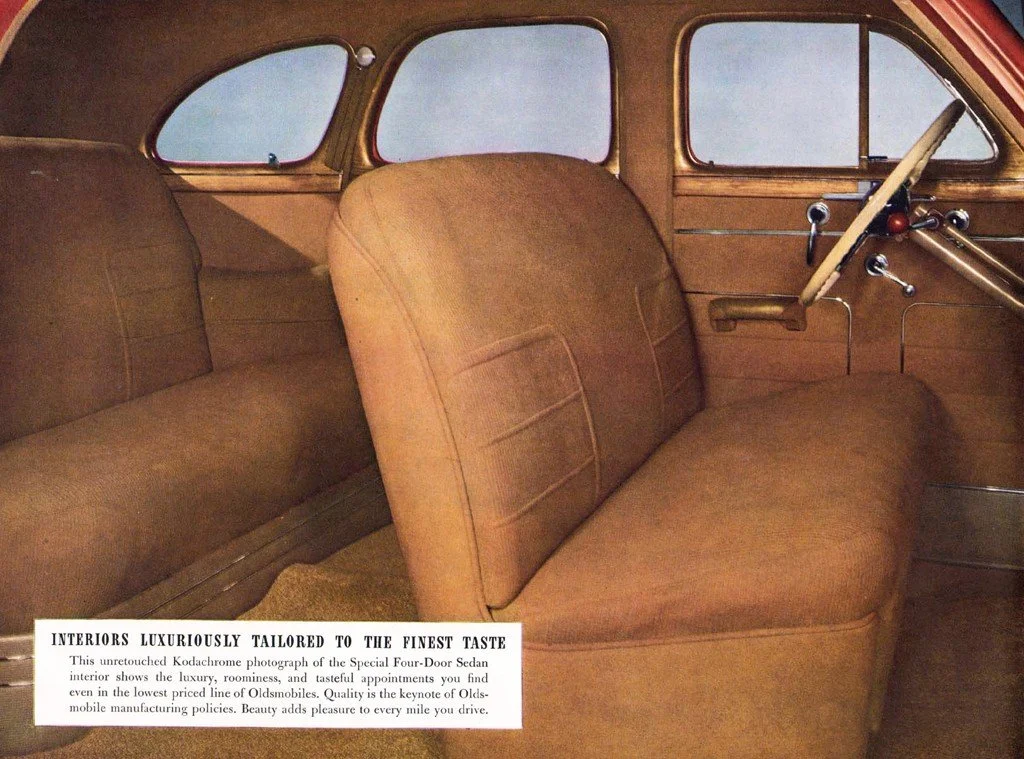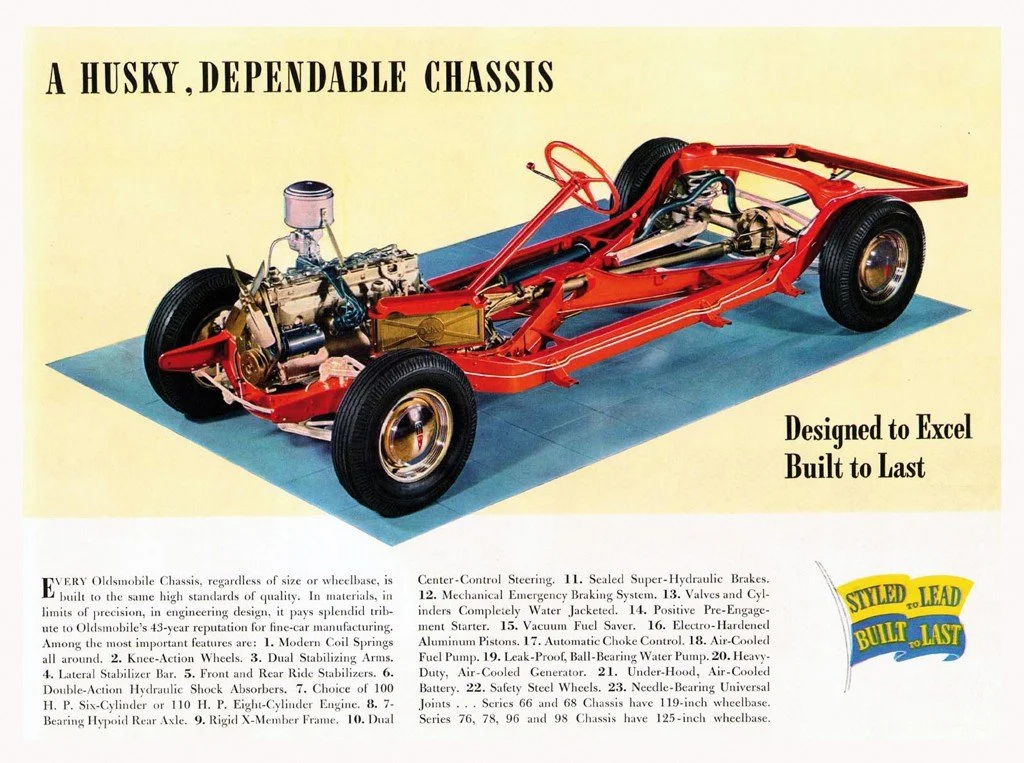-
The 1941 Oldsmobile 98 was the largest and most powerful offering in the lineup, sporting a 124.5 inch wheelbase and a straight-eight engine, with 257 cubic inches in side valve configuration. Standard transmission was a three-speed manual, while the innovative Hydramatic automatic transmission was available for an extra $100. The differences between the luxury 98 and the lesser series were in the wheelbase, engine displacement and more comfortable interior.
This Oldsmobile 98 Custom Cruiser 4-door sedan was given to the Shorts family funeral company in Ravenna, Ohio, in the sixties as a payment for a function. Mrs. Shorts kept the car in storage for many years in Kenton, Ohio, and in 2013 sold the car to the Athena Restoration Company, in Holland. They performed a complete frame off restoration on the Oldsmobile, and showed it at the Essen Auto Fair, in Germany. Mr. Nicola Bulgari saw the car at the show and added it to his car collection in 2015.
The car was repainted in the original two-tone Oldsmobile: Oslo Blue at the bottom (code 25) and Teal Blue at the top (code 24), while the interior was redone respecting the beige cloth -
Company
General MotorsWheelbase
124.5inInterior trim
Beige clothBrakes
front and rear drumsMake
OldsmobileLength
213inEngine
inline 8 - 257cidTires
7.00x15Model
Custom Cruiser Series 98 - Model 41-3919
Width
78inCarburetor
1 Carter downdraftOriginal Price
$1,135Body style
4-door SedanWeight
3,500lbsHorsepower
110hp @ 3600rpmProduction
22,081Model year
1941Exterior paint
Oslo Blue / Teal BlueTransmission
Hydramatic automatic -
When General Motors canceled the Oldsmobile brand in 2004, the automotive world lost one of the oldest car manufacturer, and one of the most prolific, with over thirty-five million car produced. The image of the marque among the buying public had always been of a sensible car, focused on comfort and reliability, with some luxury, yet not enough to be confused with a Cadillac, and at the same time more upscale than a Chevrolet. In the General Motors hierarchy, Oldsmobile was considered the experimental division, where all innovations were tested for reliability and performance before being used on all the GM brands. Automatic transmission, V8 overhead valve engine, front wheel drive were all tested with the Oldsmobile customers before being extended to all divisions. The marque always had a dependable but tepid image, and ultimately this was the main cause for its demise.
But in 1941 the future was bright: the economy was good and people wanted new cars. Maybe they were sensing the approaching war, so all car brands enjoyed a good year. Oldsmobile shared the standard General Motors bodies with the other divisions, with only the front end to give each brand its own personality. For 1941 the line-up was divided into three series distinguished by the different wheelbase, and each series was available with a choice of six or eight cylinder engines. The cheapest was the Special six or eight, with a 118 inch wheelbase, in the middle there was the Dynamic Cruiser with a 124.5 inch wheelbase, and at the top there was the Custom Cruiser, built on the same wheelbase. Both engines were of the side-valve design, with a 238 and 257 cubic inch displacement, with respectively 100 and 110 horsepower output. Mated to these reliable engines was a three-speed manual transmission, with the shifter on the steering column. The chassis was very similar to the 1940 models, but with an X-member added for improved rigidity. Style-wise, the 1941 models were lower and wider, with more brightwork and concealed running boards. The big news was the introduction of the Hydramatic automatic transmission, a feature that really changed the way of life for American drivers. Available for the first time for the model year 1940, the Hydramatic was improved for 1941, and made more readily available as production began to meet demand. The Hydramatic was an evolution of the Automatic Safety Transmission that first appeared in 1937. Cars equipped with it had a clutch, but once in motion the transmission shifted by itself. Instead, the Hydramatic combined a planetary gearbox with a fluid coupling, doing away with the clutch and offering fully automatic shifting through four speeds. The automatic transmission really changed the way of driving, allowing just about everybody to drive, without having to fight with a heavy clutch pedal. Cars became easier to drive, and many families bought a second car that could be driven by the wife for the daily errands.
For model year 1941, Oldsmobile held its sixth place in the sales charts with over 270,000 cars sold, an all-time record for the marque, besting the 1940 figures of 192,000 cars. 1941 was also the year when the 2-millionth Oldsmobile was built.



